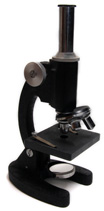People have always enjoyed the “sweet” life. Cave drawings from 20,000 years ago, of a man robbing a bees’ nest for honey, show that the desire for sweetness was alive and well even then. Given the lifestyle, it is unlikely the cave man depicted was overweight (you burn a lot of calories robbing those bees’ nests).
But in the 20th century — with the comforts and technology that make our lives perhaps the most sedentary in history — people want sweetness without extra calories. Fortunately, a low-calorie sweetener came on the scene just in time – saccharin, the world’s oldest artificial sweetener.
 Saccharin was discovered in 1879 by researchers at Johns Hopkins University. Even then, it was a boon to food manufacturers and consumers, especially those with diabetes, who could use the new ingredient to sweeten their foods and beverages without the calories or glucose reaction associated with many sweeteners. In fact, it was such a boon that President Theodore Roosevelt himself got involved in regulatory activity regarding the sweetener in 1911. He formed the Remsen Board of Consulting Scientific Experts to review charges against the safety of saccharin, and was strongly opposed to any attempts to stop its use, commenting, “Anybody who says saccharin is injurious to health is an idiot.”
Saccharin was discovered in 1879 by researchers at Johns Hopkins University. Even then, it was a boon to food manufacturers and consumers, especially those with diabetes, who could use the new ingredient to sweeten their foods and beverages without the calories or glucose reaction associated with many sweeteners. In fact, it was such a boon that President Theodore Roosevelt himself got involved in regulatory activity regarding the sweetener in 1911. He formed the Remsen Board of Consulting Scientific Experts to review charges against the safety of saccharin, and was strongly opposed to any attempts to stop its use, commenting, “Anybody who says saccharin is injurious to health is an idiot.”
Still, its use was fairly limited until the two World Wars. Sugar rationing created a tremendous need for a sugar substitute both in the U.S. and Europe – and saccharin was up to the challenge. After World War II, and on into the 1960s, as the modern American interest in weight control developed, saccharin’s use and popularity continued to grow. For more than 100 years, saccharin has been a low-calorie alternative to sugar for consumers, and in the 1990s, its usefulness remains significant. Due to saccharin’s synergistic and functional properties (e.g., stability) and low cost, it remains a valuable low-calorie sweetener today.
 The availability of saccharin and other low-calorie sweeteners allows manufacturers to use the most appropriate sweetener, or combination of sweeteners, for a given product. In fact, saccharin is the foundation for many low-calorie and sugar-free products around the world. It is used in tabletop sweeteners, baked goods, jams, chewing gum, canned fruit, candy, dessert toppings and salad dressings. It also is useful in cosmetic products, vitamins and pharmaceuticals. It is popular (especially in Europe) in sweetener blends for various products.
The availability of saccharin and other low-calorie sweeteners allows manufacturers to use the most appropriate sweetener, or combination of sweeteners, for a given product. In fact, saccharin is the foundation for many low-calorie and sugar-free products around the world. It is used in tabletop sweeteners, baked goods, jams, chewing gum, canned fruit, candy, dessert toppings and salad dressings. It also is useful in cosmetic products, vitamins and pharmaceuticals. It is popular (especially in Europe) in sweetener blends for various products.
Saccharin also is one of the most studied food ingredients. Although the totality of evidence indicates saccharin is safe for human consumption, in the past there has been controversy over its safety. The basis for the controversy rests primarily on findings of bladder tumors in some male rats fed high doses of sodium saccharin. But extensive research on human populations has established no association between saccharin and cancer. In fact, more than 30 human studies have been completed and support saccharin’s safety at human levels of consumption.
 Indeed, the future looks bright for saccharin. With the growing popularity of light foods and beverages, saccharin will continue to have a significant role. All of which confirms that although it is the world’s oldest artificial sweetener, it still has plenty of “new” in it, even after all these years.
Indeed, the future looks bright for saccharin. With the growing popularity of light foods and beverages, saccharin will continue to have a significant role. All of which confirms that although it is the world’s oldest artificial sweetener, it still has plenty of “new” in it, even after all these years.
[ The need for sugar substitute Saccharin supported. ]
